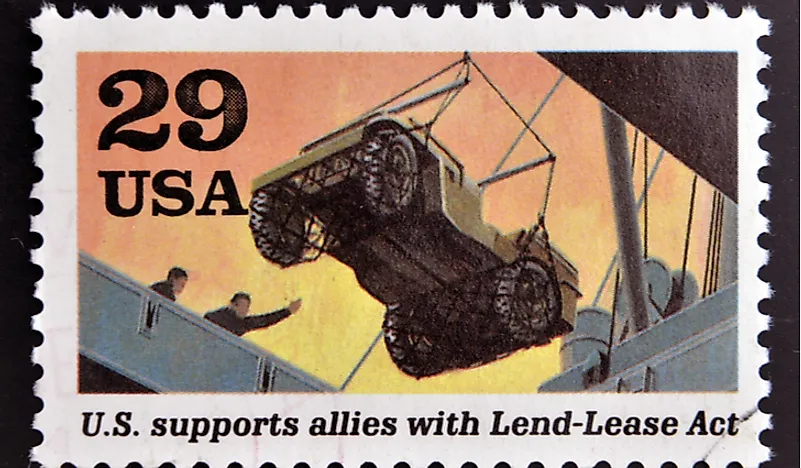What Was the Lend Lease Act in World War II?

When World War II began in 1939, the United States at first played a neutral role. During this time, Nazi Germany was winning most of its wars, and they were rapidly advancing in Europe. Despite playing a neutral role in the war, the US was not supporting Germany. Therefore, the president of the US, Franklin Roosevelt, had to look for a way through which the US could aid the war and remain in its neutral position. The country was initially tied to the Neutrality Act, which barred it from supplying any military ammunition to other countries. However, Franklin Roosevelt could not just watch Germany win, therefore, he declared that the US had large amounts of surplus weapons and ordered them to be shipped to Britain.
Franklin Roosevelt also negotiated with Winston Churchill, the then Prime Minister of Britain. The aim of this negotiation was to secure the airfields and nasal bases that were owned by the British government. Through these talks, the United States transferred 50 of its surplus destroyers to the Royal Canadian and Royal Navy in exchange for rent-free military installations for 99 years. The Lend-Lease Act enabled the British government to repel against the Germans successfully.
Purpose of the Lend-Lease Act
The United States government wanted to take an active role in the war. Therefore, Franklin wanted to offer the British government with any aid they required during the war. Through this act, the British warships were granted permission to be repaired in the United States ports. It was during this time that Roosevelt initiated the creation of the Lend-Lease Program.
The Lend-Lease Act was signed into law in 1941. Through it, the president had all the necessary powers and authority to dispose or lend military aid to any nation that he deemed vital to the defense of the US. Roosevelt authorized military materials to be transferred to Britain. These tools would then be paid for or returned after the war if they were still in good condition. To effectively run this program, the President created the Office of Lend-Lease and appointed Edward Stettinius to run the office. The plan was a success; it led to the expansion of the program to aid China in its war against the Japanese. By the end of 1941, the British had gained over $1 billion from the program.
Effects of the Lend-Lease
The US was however forced to take part in the war after the Pearl Harbor attack in 1941. As the American military was gearing up for the war, Lend-Lease materials such as aircraft, vehicles, and weapons were shipped to the Allied Nations who were all united to fight the Axis Powers. The Soviet Union and the US formed a pact in 1942; this led to the expansion of the Lend-Lease Program to permit the passage of the war materials through the Persian Corridor, the Alaska-Siberia and the Arctic Convoys. This Act benefited numerous nations that were allied with the US during the war. For instance, at the end of the war, the Red Army remained with two-thirds of the US trucks and Studebakers.











